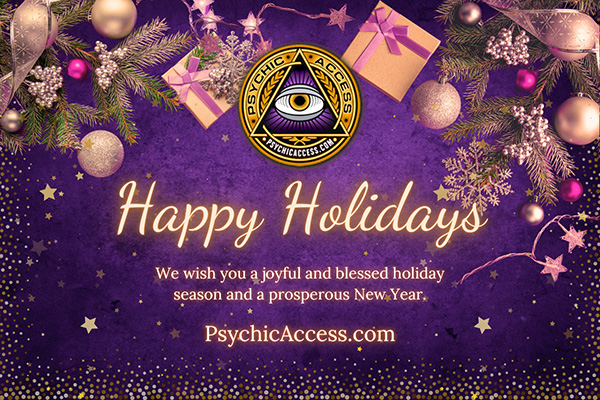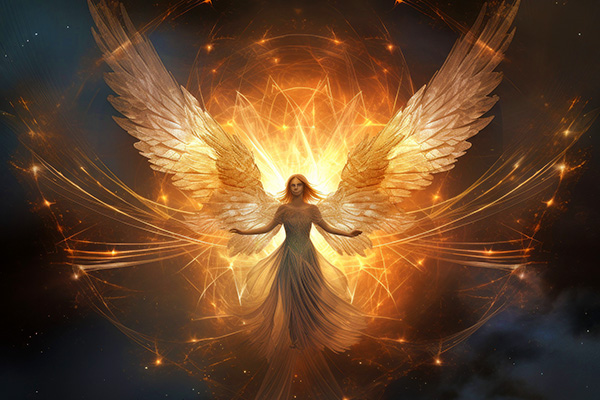ancestors
Practical Techniques For Psychic Protection
 Psychic protection, also known as spiritual or energetic protection, is a practice I hold dear because it helps shield me from negative energies, psychic attacks, and unwanted influences.
Psychic protection, also known as spiritual or energetic protection, is a practice I hold dear because it helps shield me from negative energies, psychic attacks, and unwanted influences.
The concept is not new. Mystical protection practices can be traced back to various ancient civilizations, indigenous traditions, Eastern philosophies, and Western esoteric practices.
In ancient Egypt, Greece, and Rome, amulets and talismans were worn and protective deities invoked to ward off negative energies and evil spirits. Indigenous cultures in the Americas and Africa used smudging and rituals to summon ancestral spirits for protection.
Eastern religious traditions such as Hinduism and Buddhism use mantras, yantras, and meditation for spiritual protection. Kabbalistic traditions emphasize the use of specific prayers and rituals to create spiritual shields. These practices reflect a deep-rooted belief in the power of divine intervention and sacred symbols to provide protection.
In Catholicism, believers recite prayers such as the Lord’s Prayer or the prayer to St. Michael for protection from evil. They may also use holy water, crucifixes, or medals of saints as protective symbols. In Judaism, the recitation of Psalms and the use of amulets inscribed with Hebrew verses are common practices for protection against negative influences.
Contemporary spiritual communities have adapted these ancient practices to include the use of crystals, energy healing, and visualization techniques. Workshops, books, and teachings offer a wealth of methods for psychic protection, all aimed at maintaining a balanced, protected, and positive state of being. These diverse traditions and modern adaptations underscore the universal spiritual need to protect ourselves from unseen negative energies and dark influences.
Reclaim Your Power With Higher Consciousness
 To fully embrace the divine love, guidance and support that surrounds you, your heart and mind must open and expand with increasing inner confidence and soul alignment.
To fully embrace the divine love, guidance and support that surrounds you, your heart and mind must open and expand with increasing inner confidence and soul alignment.
This natural progression follows your initial spiritual awakening and allows your higher self to unfold. As you align more deeply with the universal flow, you gain access to higher states of consciousness and greater spiritual clarity.
As you embark on this transformative spiritual path, you may feel an acceleration of energy in and around you. This sensation is not random; it is a direct reflection of the profound shifts that are taking place on a soul level.
The energy of your environment also begins to shift in response, creating a dynamic interplay between your evolving consciousness and the world around you.
Throughout this process, your ancestors, spirit guides, and angels walk beside you, whether you consciously recognize their presence or not.
One of the fundamental truths about the spiritual realms is that energy moves much faster at higher frequencies. The higher dimensions operate at a refined vibrational level that is different from the density of our everyday physical reality.
As you attune to these higher frequencies, you will begin to notice an inner transformation — one that affects your thoughts, emotions, and overall perception of life.
Wishing You A Joyful Holiday Season
 Valued clients, as we come to the end of a busy 2024, we want to express our deepest gratitude for your unwavering support throughout another successful year. You continue to inspire us and we are honored to be a part of your personal and spiritual journey.
Valued clients, as we come to the end of a busy 2024, we want to express our deepest gratitude for your unwavering support throughout another successful year. You continue to inspire us and we are honored to be a part of your personal and spiritual journey.
Thank you for the profound impact you have on our team and our work. Your loyalty and trust not only strengthens our resolve, but fuels our passion to continue making a difference. You are the reason for the continued success of our soul circle, and we are deeply grateful to you for being a part of our growth journey.
Through many ups and downs, we have remained committed to being a source of encouragement, healing and guidance throughout the past year. It is our privilege to help you meet life’s challenges, embrace your opportunities, and manifest your highest good. We look forward to continuing to serve you and touching many lives in the years to come.
At this time of year, we are also reminded of the true spirit of the season, which transcends the hustle and challenges of everyday life. It is truly a time to reflect on the extraordinary connections that enrich our lives and to celebrate the kindness, compassion and love that unite us all.
We hope that this holiday season brings you many blessed moments of laughter, joy and heartfelt connection, whether you are surrounded by loved ones or spending time in quiet reflection. If you find yourself alone this season, remember that you are never truly alone. Spirit walks beside you, the Divine protects and guides you, the Universe always has your back, and we are always here for you as part of your chosen soul family.
Inner Journey To The Mystical Isle Of Avalon
 Sometimes when the pressures and demands of modern life become too much, I retreat to one of my favorite places in the universe: the mythical island of Avalon.
Sometimes when the pressures and demands of modern life become too much, I retreat to one of my favorite places in the universe: the mythical island of Avalon.
This legendary island of Celtic mythology is steeped in legends of healing, psychic learning, sacred crafting, and the life and times of King Arthur. Its name translates as “Isle of Apples,” emphasizing its association with fertility, abundance, and otherworldly beauty.
In folklore, Avalon, or Insula Avallonis, was a sanctuary of deep spiritual and psychic knowledge and was known as a training ground for pagan priestesses dedicated to the Great Mother Goddess. These women dedicated their lives to spirituality, honing their skills in clairvoyance, herbalism, weaving, and deep devotion to the Divine Feminine.
But Avalon was not only a sanctuary for women. Men were also an integral part of its story. Merlin the magician is inextricably linked to the history of the island, having trained the young Arthur there for his kingship.
Avalon is also entwined with many other tales woven through the lives of King Arthur, Guinevere, Morgan le Fay, Merlin, Nimue (the Lady of the Lake), and others. Legend also has it that King Arthur was brought to Avalon by his half-sister, Morgan le Fay, to heal after being badly wounded in battle.
The question of whether Avalon really existed straddles the line between myth and reality. Some historians and researchers speculate that Avalon may be based on a real place. Glastonbury, England, is often associated with Avalon because of its mystical aura and ties to Arthurian legend.
The Magic Of Dowsing Stands The Test Of Time
 Dowsing, also known as “divining” or “water witching,” is an ancient practice that uses a tool such as a pendulum or divining rod to locate what is hidden, most commonly underground water, minerals, or lost items. it is also a divination method used to tap into the unseen or mystical to gain spiritual, psychic, or energetic insights.
Dowsing, also known as “divining” or “water witching,” is an ancient practice that uses a tool such as a pendulum or divining rod to locate what is hidden, most commonly underground water, minerals, or lost items. it is also a divination method used to tap into the unseen or mystical to gain spiritual, psychic, or energetic insights.
While skeptics dismiss it as pseudoscience, dowsing has persisted in many cultures for thousands of years, standing the test of time as a mysterious blend of mysticism and physics. I believe its continued presence throughout history speaks to its importance and continued relevance in today’s technological society.
Dowsing has ancient roots dating back thousands of years, although its exact historical beginnings remain uncertain. Archaeological evidence suggests that the practice dates back to ancient Egypt and China, where early civilizations used rudimentary dowsing techniques to locate water and minerals. Cave paintings in North Africa from around 8000 B.C. depict people holding forked sticks, which many experts believe may be dowsing rods.
The ancient Greeks and Romans were also familiar with dowsing, especially for locating underground water sources. They considered the dowsing rod or pendulum a sacred tool capable of tapping into hidden energies. It was believed that certain materials, especially wood or metal, could act as conduits for detecting invisible forces in the earth.
In the Middle Ages, dowsing became more widely practiced in Europe, often by miners searching for metal veins, especially during the mining booms in Germany and England. However, due to its inexplicable, mystical nature, dowsing also increasingly became associated with the occult and witchcraft, leading to its condemnation by the church.
Honor Your Pagan Heritage This Halloween
 Samhain holds special significance for those who practiced paganism in a past life, especially those who were involved in magical practices as seers, soothsayers, druids, and witches.
Samhain holds special significance for those who practiced paganism in a past life, especially those who were involved in magical practices as seers, soothsayers, druids, and witches.
For us, this time of year evokes a deep sense of nostalgia, spiritual reorientation, and a return to ancient wisdom as the veil between worlds thins and we reconnect with our ancestors and the spirit realms.
Samhain is an ancient Celtic festival marking the end of the harvest season and the beginning of winter, traditionally celebrated from October 31 to November 1. It is one of the four great Gaelic seasonal festivals, along with Imbolc (February 1), Beltane (May 1), and Lughnasadh (August 1).
In Celtic tradition, Samhain (pronounced “sow-in”) is a liminal time when the boundary between the physical and spiritual worlds is thinner, allowing the spirits of our deceased loved ones, ancestors, and other spirits to cross over more easily.
In ancient times people would light fires and wear costumes to ward off harmful spirits, while also honoring their ancestors with offerings of food and drink.
Samhain is considered the origin of modern Halloween traditions, although Halloween has evolved and incorporated elements from other cultures to become a mostly secular and commercial holiday. For Neopagans and Wiccans, Samhain remains an important festival for honoring the dead, celebrating the cycle of life, death, and rebirth, and connecting more deeply with the spirit realm.
